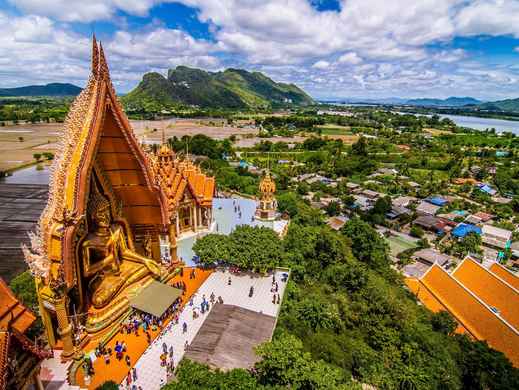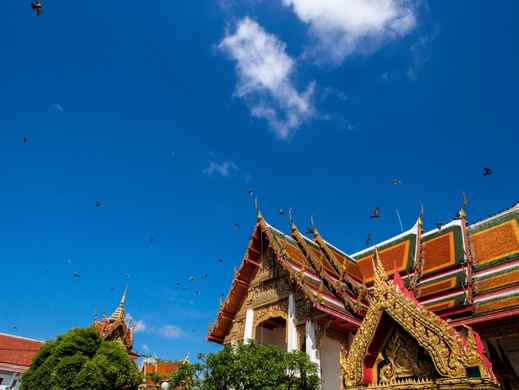


Ratchaburi
Asia
/
Thailand
/
Ratchaburi
Located in the western parts of Thailand, Ratchaburi province draws in tourists with its incredible cultural heritage and breathtaking natural landscapes that are just a two-hour drive from Bangkok. The region is characterized by a tropical climate, providing warm temperatures and a vibrant green countryside thanks to occasional monsoon rains throughout May to October.
Dubbed the "City of Pottery," ceramics have been at the heart of Ratchaburi's identity for centuries, particularly in the district of Bang Phae, where the age-old technique of crafting traditional water jars is still practiced. The local way of life here is tranquil and revolves around the Mae Klong River, home to authentic Thai floating markets.
Ratchaburi's standout feature is its distinctive mix of cultural offerings and natural attractions. Touristy but iconic, the Damnoen Saduak Floating Market remains the most renowned in Thailand, presenting a sneak peek into traditional river trading. Additionally, the Khao Ngu Stone Park, abundant in limestone formations, serves an unparalleled backdrop for hiking and photography enthusiasts.
Gastronomes will delight in the local delicacy of Khao Lam, a succulent fusion of sticky rice with coconut milk, traditionally cooked in bamboo tubes, particularly well-executed in the Suan Phueng district. The neighboring Myanmar's influence imbues the region's cuisine, presenting unique fusion dishes that are hard to come by elsewhere in Thailand.

Travel Tips for Ratchaburi
What you need to know before traveling here
Getting Around Ratchaburi
A guide to Ratchaburi's local transportation
The bus network linking major towns within Ratchaburi is cheap but basic, lacking essential services like air conditioning. Tickets can be purchased directly from the driver in cash. The schedule is quite flexible, and routes are scribed in both Thai and English for easy navigation.
Practical Tips for Ratchaburi
Things to prepare and best way to visit
The ideal time to visit Ratchaburi is between November and February, when the weather is inescapably charming with low humidity and minimal rainfall. Additionally, this is the time when the floating markets buzz, and outdoor activities can be thoroughly enjoyed.
On a shoestring budget, expect to spend between 800-1,200 baht daily, inclusive of accommodation and meals. Mid-range travelers should anticipate a daily expense of 2,000-3,000 baht.
No, we recommend sticking to bottled water. While most hotels and restaurants provide filtered water, tap water should be avoided for consumption and dental hygiene.
Major tourist spots and hotels will generally have English-speaking staff. However, it could be beneficial to learn some basic Thai phrases, particularly for interactions in local markets and rural areas.
Reach the market early, between 6-8 AM, to avoid the rush of tour groups. Organize transport through your accommodation, or join a tour from Bangkok. The market is liveliest on the weekends.
See All Practical Tips for Ratchaburi

Explore Ratchaburi
Create your itinerary with our top picks below

Travel Tips for Ratchaburi

Explore Ratchaburi
More Destination Near Ratchaburi

















 Facebook
Facebook Instagram
Instagram TikTok
TikTok Youtube
Youtube Telegram
Telegram
